STEER, Philip Wilson
Philip Wilson Steer was born at Birkenhead, near Liverpool, Merseyside on 28 December 1860, son of Philip Steer (5 February 1810-1 July 1871), portrait-painter and teacher, and his wife Emma Harrison (1816–1898), eldest daughter of the Revd William Harrison, who married at Hanwood, Salop on 20 September 1853. In 1864 the Steer family moved to Apsley House, Whitchurch, near Ross-on-Wye, Herefordshire where the children were taught at home by a governess. Philip Wilson Steer followed his brother to Hereford Cathedral School 1875-1877, but the examinations of the British Civil Service were demanding, and Philip decided to become an artist. He studied at the Gloucester School of Art in 1878 and at the South Kensington School of Art 1880-1881 and, after being rejected by the Royal Academy Schools, he studied in Paris 1882-1884, firstly at the Académie Julian, under William Adolphe Bouguereau (1825-1905), and then in the École Des Beaux Arts under Alexandre Cabanel (1823-1889), becoming a follower of the Impressionist school. Returning to England about 1884 he then began the first of his many summer painting expeditions to Walberswick, Suffolk, a favoured location of plein-air painters such as Walter Osborne (1859-1903), first staying at the Blue Anchor Inn on Walberswick Green and later lodging at Valley Farm on the edge of the village. Until 1887 he spent every summer there alone, formulating his own style of English impressionism and in 1888 he persuaded his painter friend, Fred Brown (1851-1941), teacher and future director at the Slade School of Fine Art to join him, and by 1889 their visits to Walberswick were sandwiched between trips to Montreuil-sur-Mer and Boulogne in France, visiting Walberswick briefly for the last time in 1891. Steer exhibited at the Royal Academy and in 1886 became a founder member of the New English Art Club, where he continued to exhibit regularly. Living in Chelsea, but in the summers painted in Yorkshire, the Cotswolds, and the West Country and on the south and east coasts of Britain and taught at the Slade School of Fine Art, London 1893-1930, where one of his many pupils was Anna Airy. During the First World War he was recruited by Lord Beaverbrook, then Minister of Information, to paint pictures of the Royal Navy and in 1931 was awarded the Order of Merit. Steer is best known for his landscapes, such as 'The Beach at Walberswick' (1890) and 'Girls Running: Walberswick Pier' (1894) both at the Tate Gallery, London. His paintings played with the handling of light, experimenting with breaking up the colours such as Claude Monet (1840–1926) was doing at this same time, particularly in a series of summer holiday scenes painted on the East Coast at Walberswick and Southwold in Suffolk. Besides the French Impressionists’, Steer was influenced by Whistler (1834-1903) also by such old masters as François Boucher (1793-1779), and with Walter Sickert (1860-1942), became a leading British Impressionist. Around the mid to late 1890s he finally kowtowed to the ever-present critics when his work started turning increasingly towards conventional English style. He painted several portraits and figure studies including his most notable inter-war pictures of his devoted Welsh nurse and housekeeper, Margaret Jones, later Raynes 'Portrait of Mrs Raynes' (1922). In the 1920s he turned increasingly to watercolours but in 1935 his sight began to fail, and he had stopped painting by 1940. Philip Wilson Steer died of bronchitis at his Cheyne Walk London home on 21 March 1942, he was unmarried. Maggie Hemingway’s 'The Bridge' is based on the speculation that, on one of his early visits to Walberswick, Steer met and fell in love with a married woman and that it was this forbidden love that both inspired him and, eventually, left him desolate. [D S MacColl, Life, work and setting of Philip Wilson Steer (1945), B Laughton, Philip Wilson Steer, 1860–1942 (1971). Y Holt, Philip Wilson Steer (1992).]
Royal Academy Exhibits
from 23 Brunswick Road, Gloucester
1883 206 'What of the War?'
from Magdala, Denby Road, Bournemouth
1884 472 Fantaisie
from Trafalgar Studios, Manresa Road, Southwest London
1885 643 Discovery
from 109 Cheyne Walk, Southwest London
1930 832 Paddlers - watercolour. Purchased under the Chantrey Bequest
1938 38 Bird-nesting, Ludlow. Purchased under the Chantrey Bequest
Works by This Artist
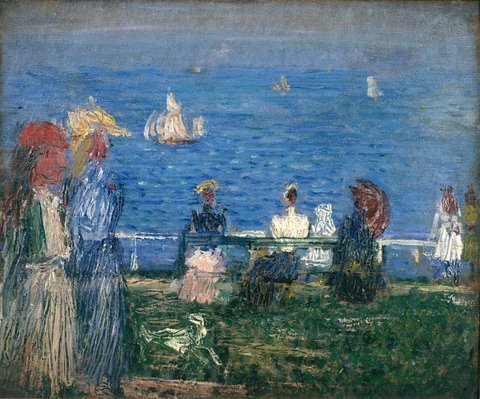
|
SouthwoldOil on canvas
|
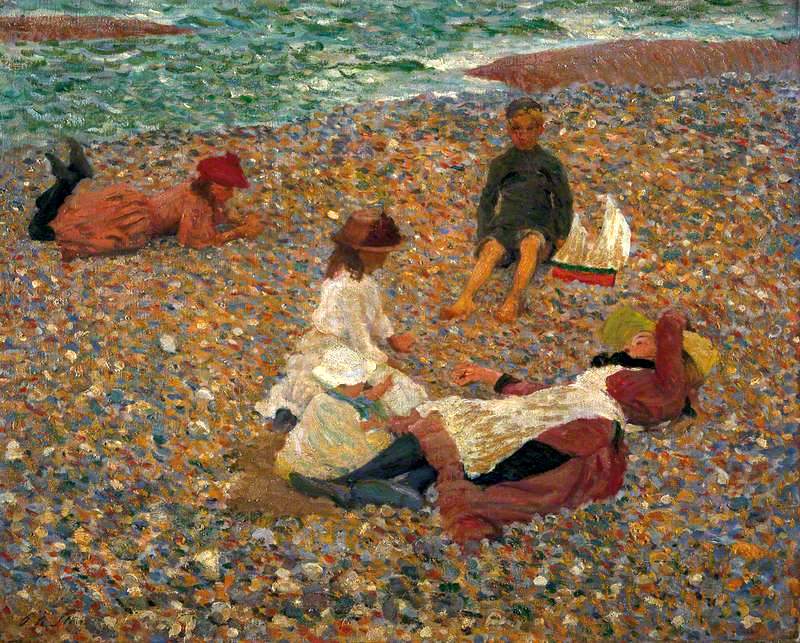
|
Knucklebones, Walberswick, SuffolkOil on canvas
|
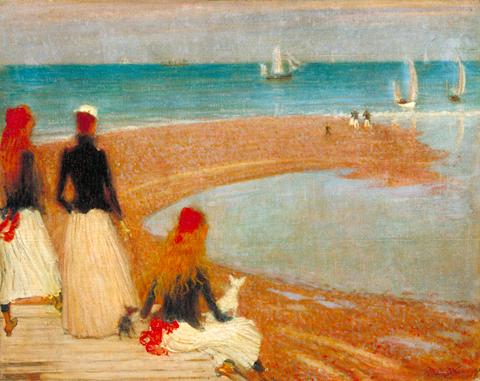
|
The Beach at WalberswickOil paint on wood
|
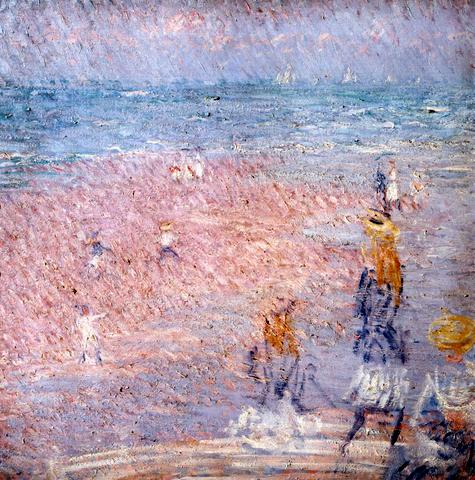
|
Figures on the Beach, WalberswickOil paint on canvas
|
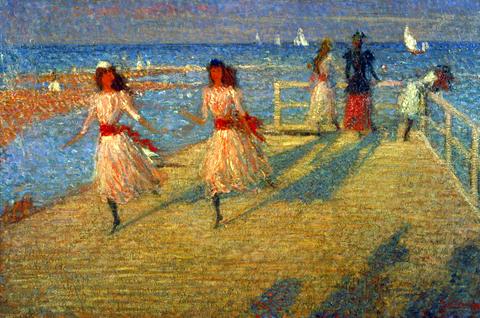
|
Girls Running, Walberswick PierOil paint on canvas
|
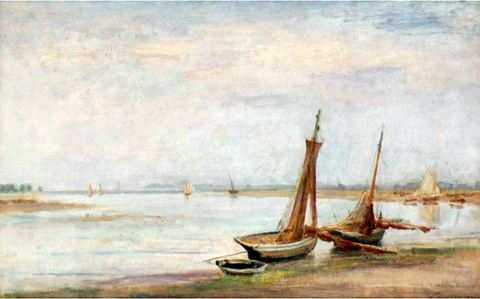
|
Low Tide at MaldonOil on canvas
|
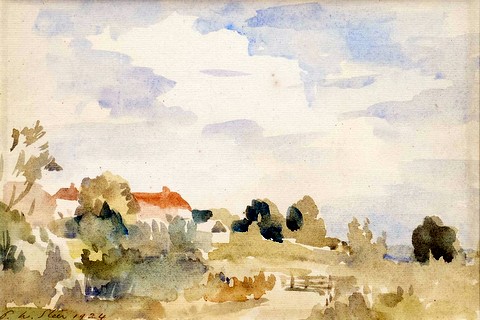
|
Cottages among TreesWatercolour
|